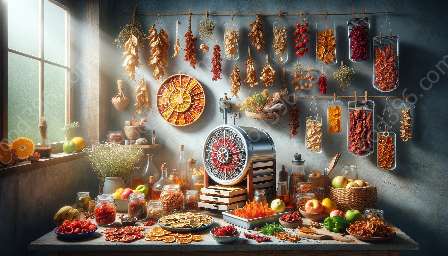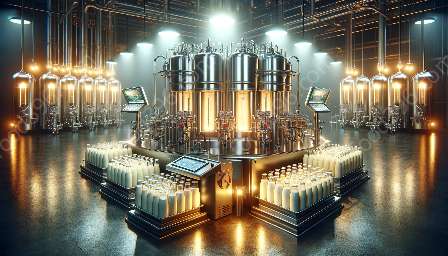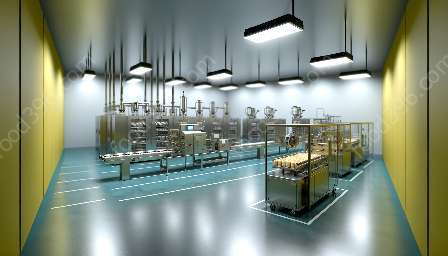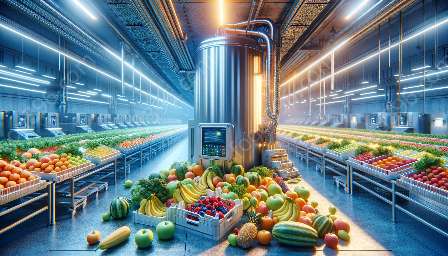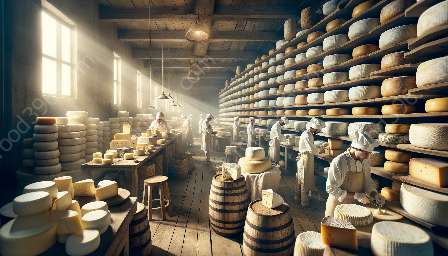Pasteurization is a vital process in the field of food preservation and processing, playing a significant role in ensuring the safety and freshness of various food and drink products. This topic cluster aims to provide a comprehensive understanding of pasteurization, its methods, applications, and its relevance in the food and drink industry.
The Origins of Pasteurization
Louis Pasteur, a French chemist and microbiologist, developed the pasteurization process in the 1860s as a means of preventing the spoilage of wine and beer. He discovered that heating liquids to specific temperatures could kill harmful microorganisms, thereby extending the shelf life of the products.
Pasteurization is named after Louis Pasteur, as he pioneered the use of heat treatment for the preservation of perishable goods. The process was initially applied to wine and beer but has since been widely adopted across the food and drink industry.
The Process of Pasteurization
Pasteurization involves heating food and drink products to a specific temperature for a predetermined time, followed by rapid cooling. This process effectively destroys pathogenic microorganisms, including bacteria, molds, and yeasts, without significantly affecting the product's taste and nutritional content.
There are different methods of pasteurization, including:
- High-Temperature Short-Time (HTST) Pasteurization: Involves heating the product to a high temperature for a short period, typically around 161°F (72°C) for 15 seconds.
- Low-Temperature Longer-Time (LTLT) Pasteurization: Uses lower temperatures for a longer time, typically around 145°F (63°C) for 30 minutes.
- Ultra-High-Temperature (UHT) Pasteurization: Involves heating the product to ultra-high temperatures, around 275°F (135°C), for a very short time, usually 2-5 seconds.
Each method has specific applications based on the type of product being treated, such as dairy, juices, and canned goods.
Applications of Pasteurization
Pasteurization is widely used in the food and drink industry to enhance product safety, extend shelf life, and maintain product quality. Some common applications include:
- Dairy Products: Milk, cream, and cheese products undergo pasteurization to eliminate harmful bacteria while preserving their nutritional properties.
- Fruit Juices: Pasteurization helps to extend the shelf life of fruit juices by killing pathogens and minimizing spoilage.
- Canned Foods: Many canned goods, like vegetables and soups, are pasteurized to eliminate microbes and ensure their long-term stability.
- Beer and Wine: The pasteurization process reduces the risk of contamination and spoilage in alcoholic beverages.
- Bottled Water: Pasteurization ensures that bottled water is safe for consumption by eliminating harmful microorganisms.
By applying pasteurization techniques, food and drink manufacturers can guarantee the safety and quality of their products, meeting regulatory standards and consumer expectations.
Significance in Food Preservation and Processing
Pasteurization serves as a critical step in food preservation and processing, contributing to the overall safety and longevity of food and drink items. Its significance in these areas is evident in the following aspects:
- Food Safety: By effectively destroying harmful bacteria and pathogens, pasteurization minimizes the risk of foodborne illnesses, ensuring that products are safe for consumption.
- Extended Shelf Life: The process of pasteurization significantly extends the shelf life of perishable items, reducing waste and enabling wider distribution and availability.
- Preservation of Nutritional Value: While eliminating harmful microorganisms, pasteurization also aims to minimize the impact on the nutritional content and sensory attributes of food and drink products, maintaining their overall quality.
Pasteurization and the Food and Drink Industry
In the food and drink industry, pasteurization plays a crucial role in maintaining consumer trust and satisfaction by ensuring that products are safe, fresh, and meet regulatory standards. Its impact on the industry is evidenced through:
- Regulatory Compliance: Pasteurization is a key requirement for many food and drink products to comply with industry regulations and standards related to food safety and quality.
- Consumer Confidence: The application of pasteurization reassures consumers that the products they purchase are free from harmful bacteria and have an extended shelf life, promoting trust and loyalty.
- Product Innovation: Advancements in pasteurization technology and processes enable manufacturers to develop new and improved products with enhanced safety and freshness.
Ultimately, pasteurization serves as an essential tool for food and drink producers, enabling them to meet consumer expectations for high-quality products with extended shelf life and enhanced safety.
Conclusion
Pasteurization stands as a fundamental process in food preservation and processing, contributing to the safety, freshness, and longevity of a wide range of food and drink products. Its historical significance, diverse applications, and impact on the industry highlight its crucial role in ensuring consumer health and satisfaction. By understanding the science and significance of pasteurization, stakeholders in the food and drink sector can continue to deliver products that meet the highest standards of safety and quality, thereby fostering trust and confidence among consumers.


